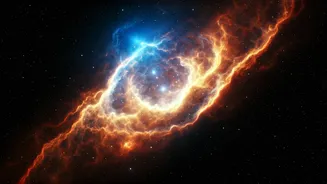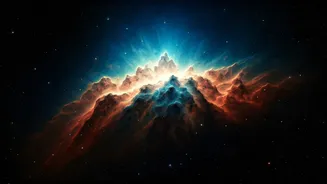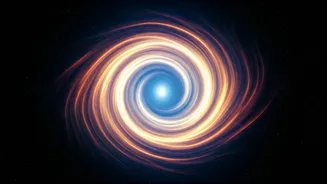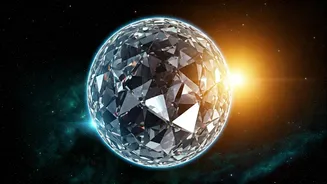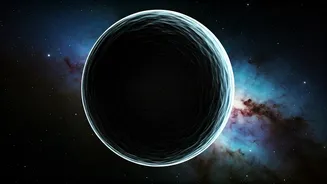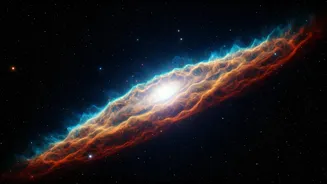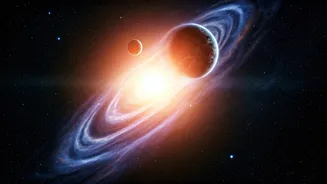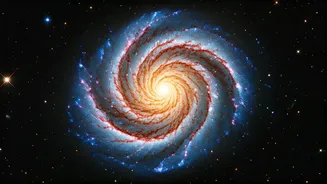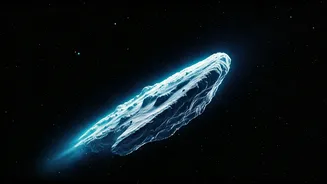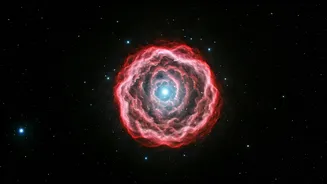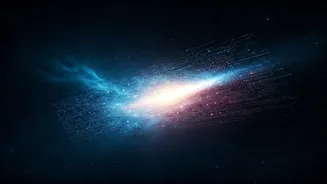Cosmic Wonders Revealed
NASA's newly shared images open a window to the universe, displaying celestial objects and astronomical phenomena in remarkable detail. These images are captured
using advanced telescopes and space-based observatories, which give scientists unprecedented perspectives on cosmic events and formations. The images include distant galaxies, nebulae, and planetary surfaces. Each image tells a story of the universe's evolution. They help scientists understand the composition, behavior, and evolution of celestial bodies. Furthermore, these photographs are valuable for both scientific research and for public engagement, inspiring awe and curiosity about the cosmos. The collection offers a chance for people to marvel at the universe's beauty and vastness. The images are a testament to the power of human curiosity and ingenuity in space exploration.
Capturing Distant Galaxies
Among the images shared, distant galaxies are prominent, displaying a variety of shapes, sizes, and compositions. These galaxies are situated light-years away, and their appearance provides insight into the formation and evolution of these colossal structures. The images reveal spiral galaxies with swirling arms, elliptical galaxies with smooth, rounded shapes, and irregular galaxies showing chaotic features. The data from these images help astronomers study the distribution of stars, gas, and dust within galaxies. The images are critical for exploring how galaxies interact with each other and how they evolve over billions of years. By analyzing the images, researchers learn about the processes that drive galactic growth. These processes include star formation and the effects of supermassive black holes located at the centers of many galaxies. The images also enhance our understanding of the universe's structure at large scales, mapping how galaxies are distributed across space and forming immense cosmic webs.
Nebulae: Stellar Nurseries
Nebulae, vast clouds of gas and dust where stars are born, are another key focus in NASA’s new image collection. These stellar nurseries are some of the most beautiful and dynamic features in the cosmos. The images display intricate patterns of color and light as the nebulae glow from the radiation of young, hot stars. These photographs reveal how stars form and the environments in which they come to life. The nebulae's structures show complex interactions. The images show how stellar winds and radiation sculpt the gas and dust. They are essential for understanding how stars influence their surrounding environments. Scientists study the composition of nebulae to learn about the elements that make up stars and planets. Moreover, the images provide a glimpse into the ongoing process of stellar evolution. They offer visual evidence of the universe's cycle of birth, death, and rebirth.
Exploring Planetary Surfaces
The new image collection includes captivating pictures of planetary surfaces, particularly of planets within our solar system. These images, often collected by rovers and space probes, reveal the diverse geological features of planets and moons. They show impact craters, volcanic landscapes, and evidence of past or present geological activity. These images assist scientists in studying planetary composition, the effects of erosion, and the formation of surface features. The exploration of these features offers clues about the historical climates and environments of these celestial bodies. The images offer scientists insights into the potential for past or present habitability. They inform future mission planning and help select the most promising areas for further exploration. By analyzing these images, scientists compare the geological processes occurring on different planets. This aids in our understanding of planetary evolution and the conditions that allow life to arise and thrive.
Technological Marvels Behind
The impressive images are the result of advances in space-based telescopes and other instruments. Telescopes such as the Hubble Space Telescope and the James Webb Space Telescope use sophisticated technology to capture light from distant objects. They reveal details that would be invisible to the human eye. These instruments collect a broad range of data, from visible light to infrared and ultraviolet radiation. They allow scientists to study objects in space. Sophisticated data processing techniques are used to analyze and enhance the images. These techniques include color correction and image stacking, to improve the clarity and detail of the images. The images highlight the capabilities of these advanced instruments and inspire further technological developments. The continuous improvements in image capture and processing technology enhance our understanding of the universe. They open new avenues for exploration and discovery.
